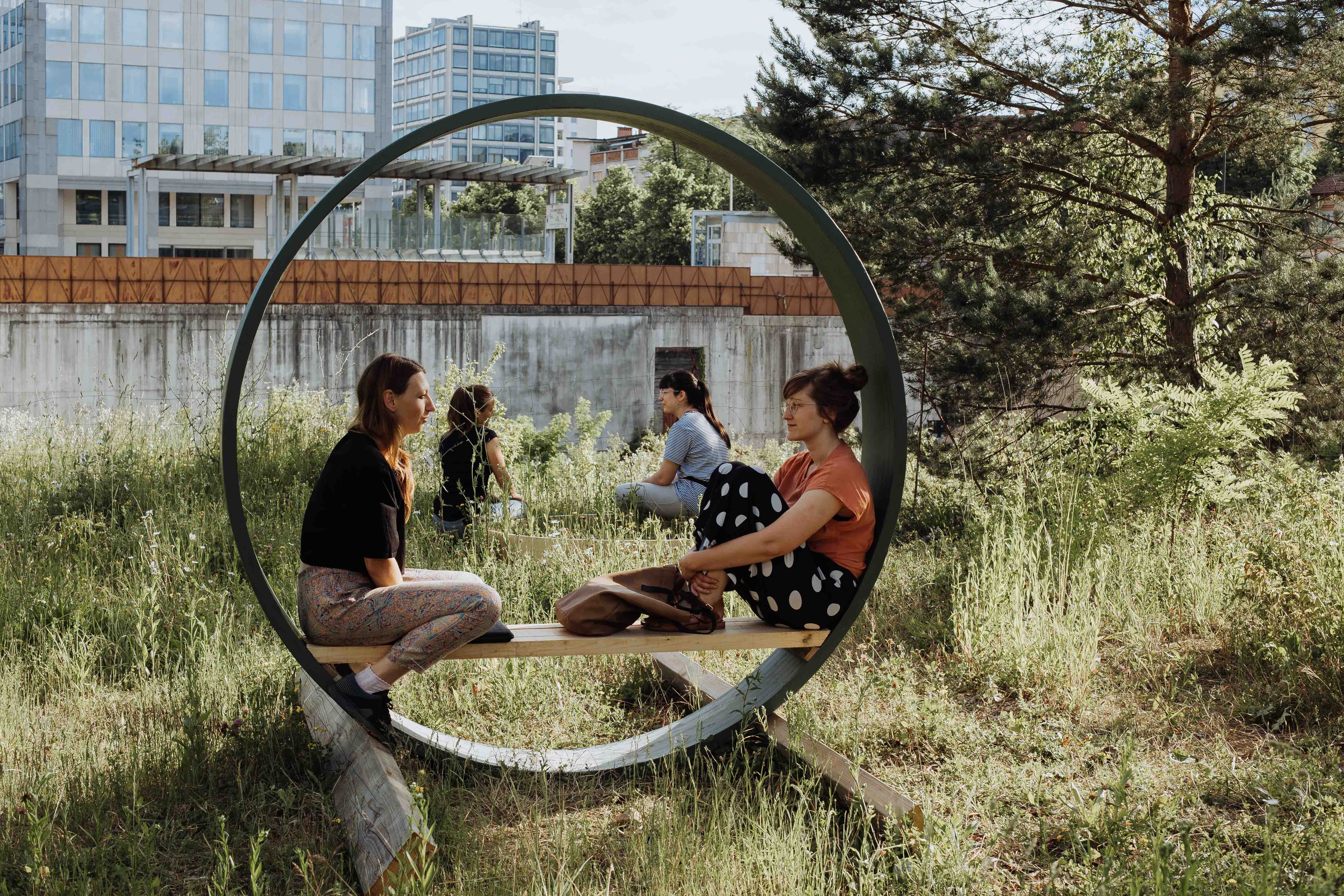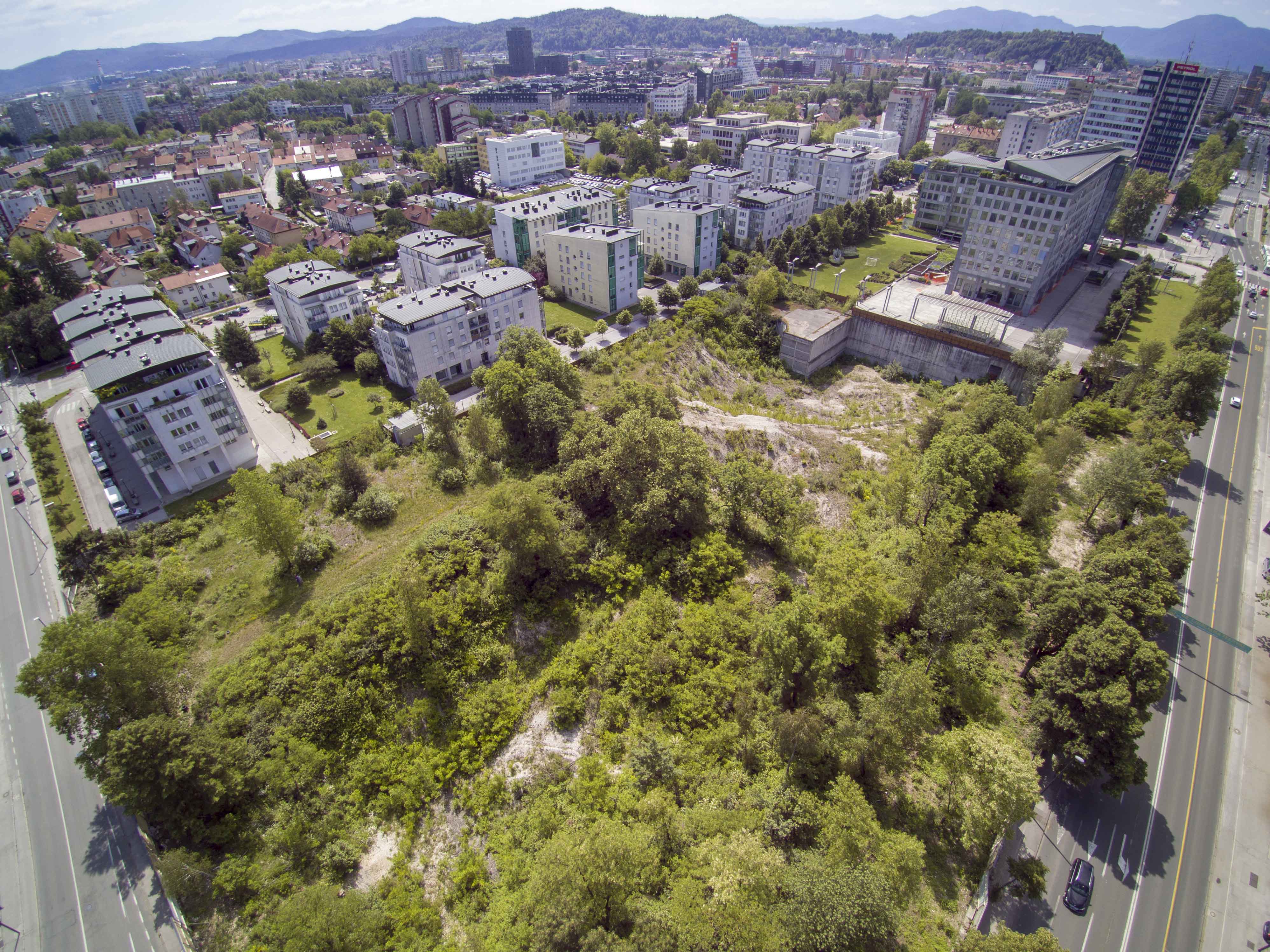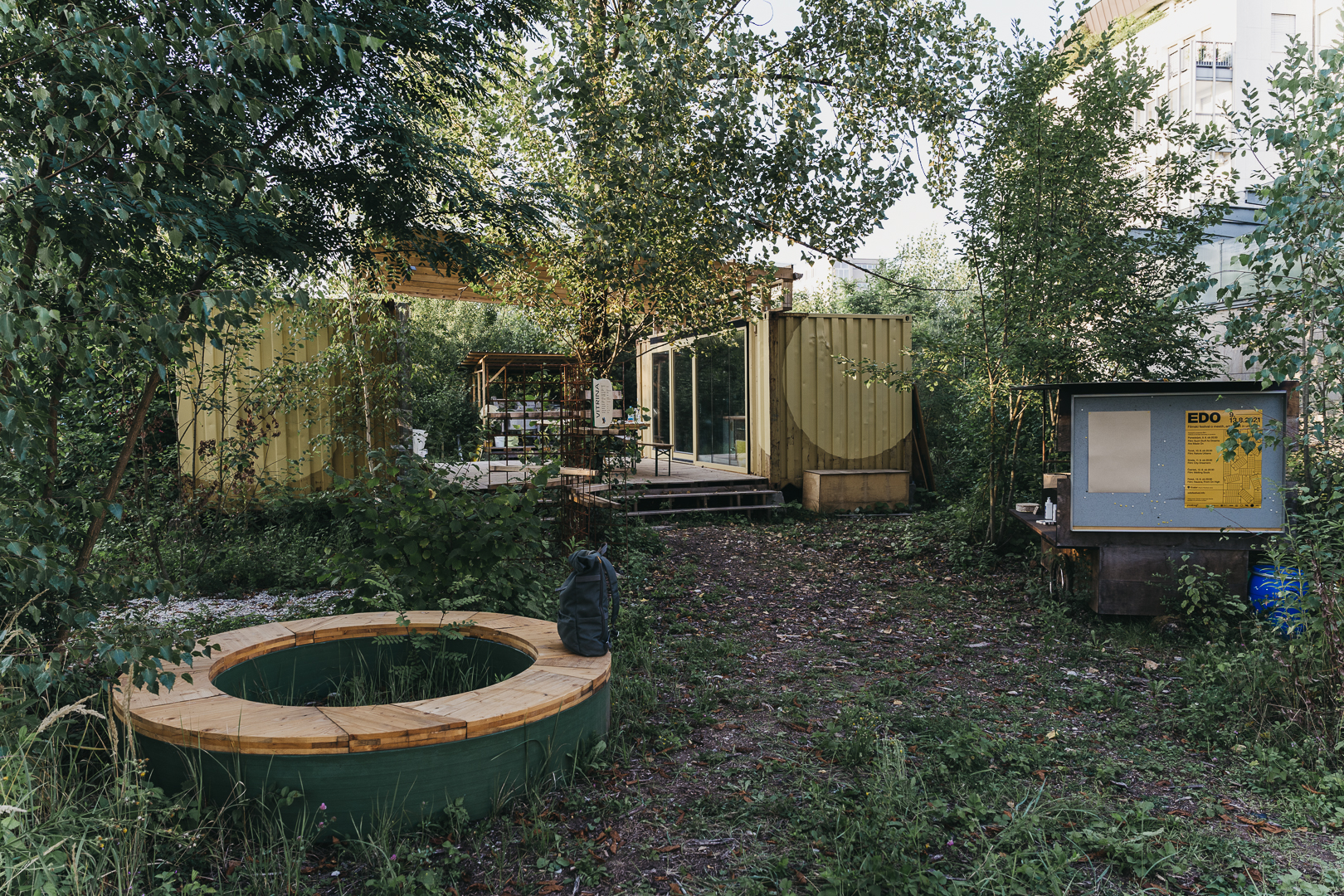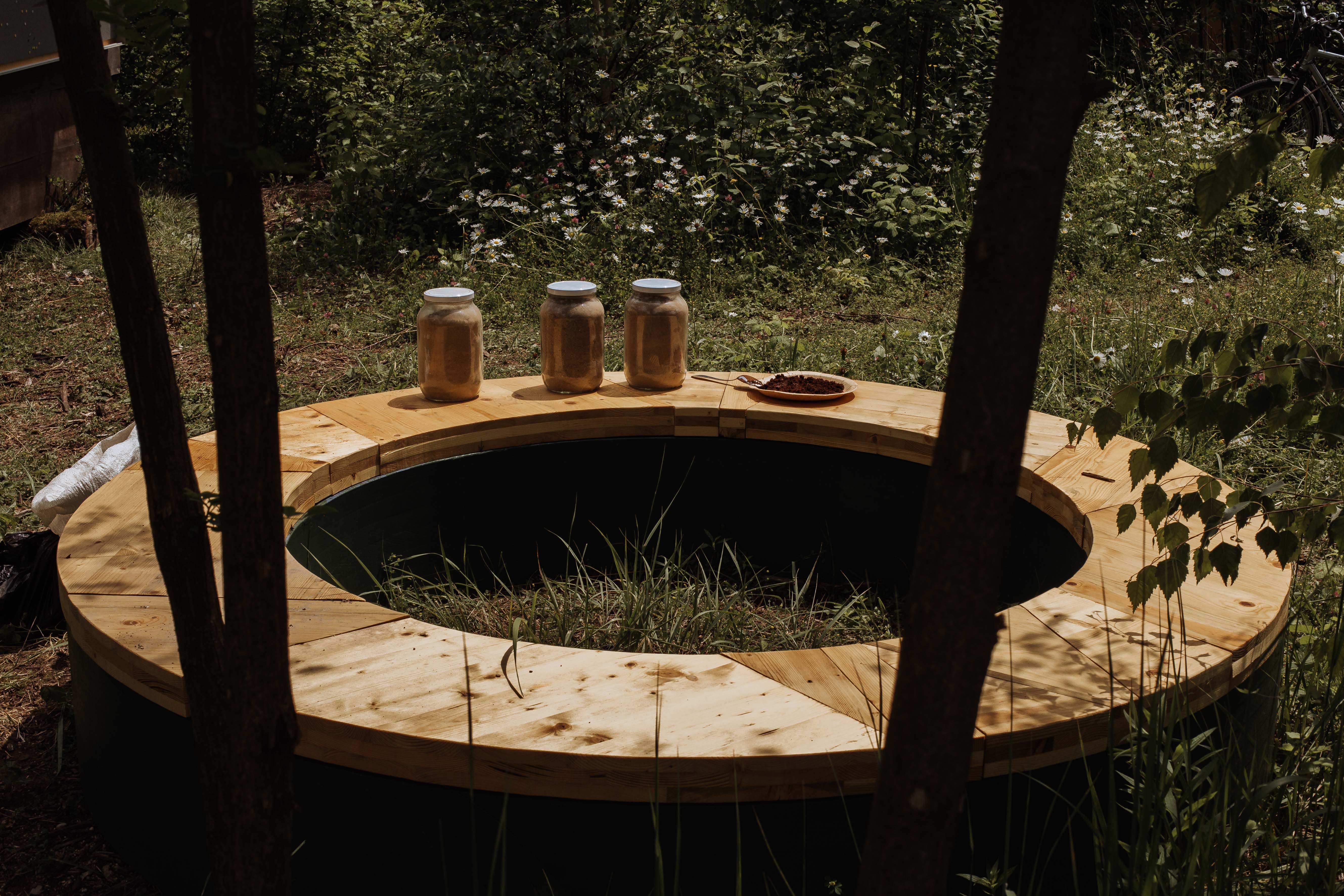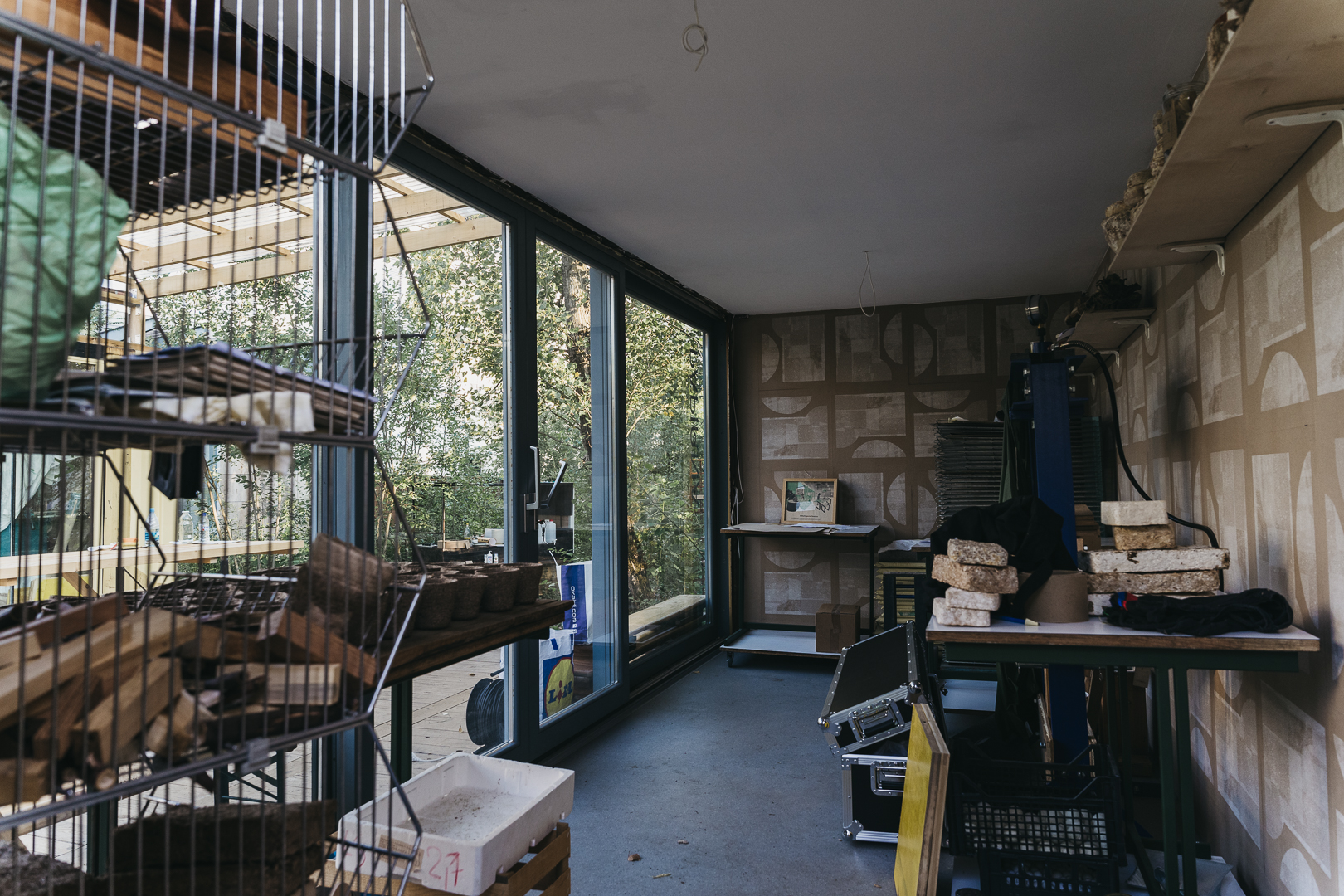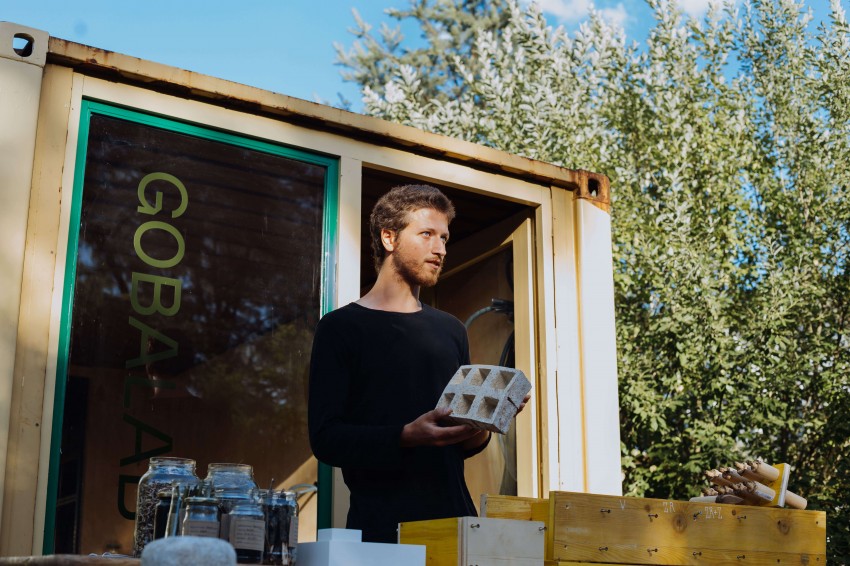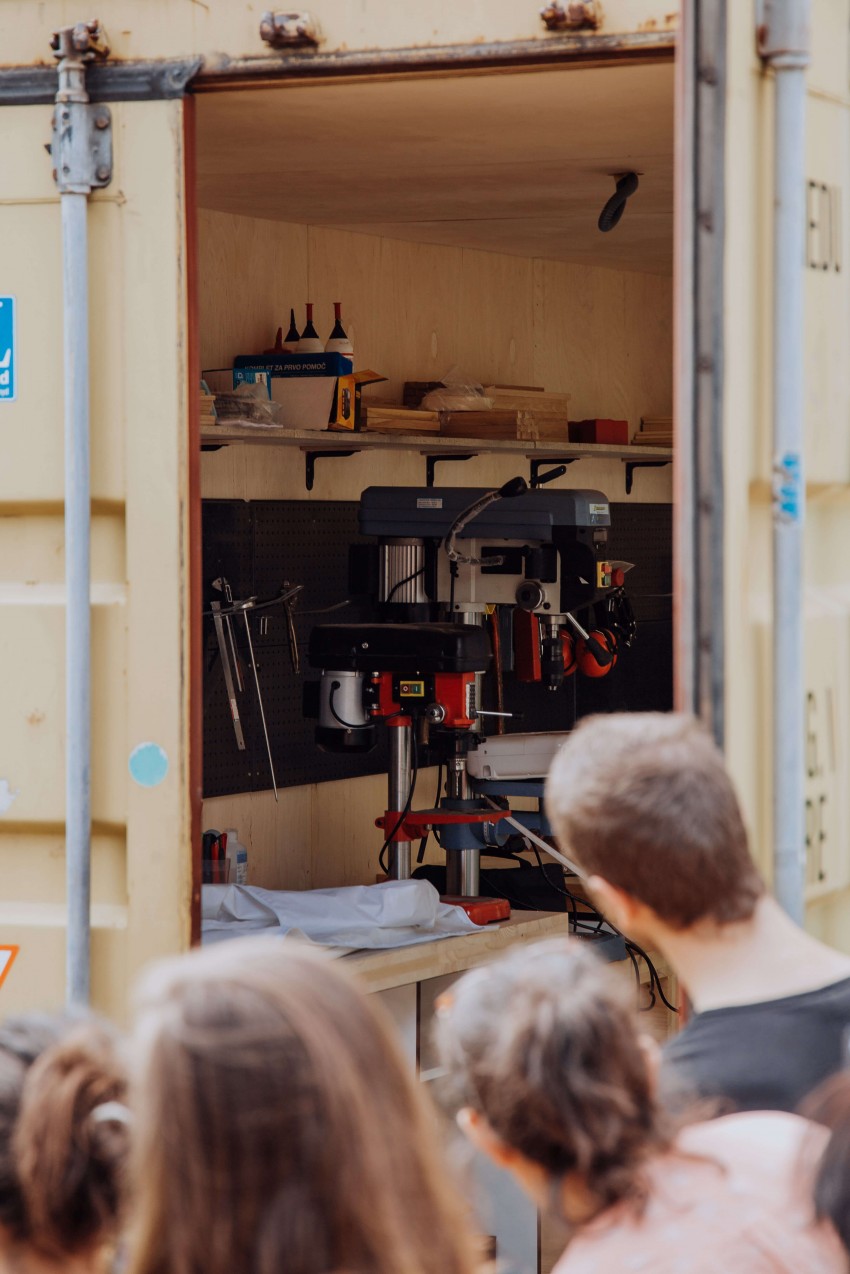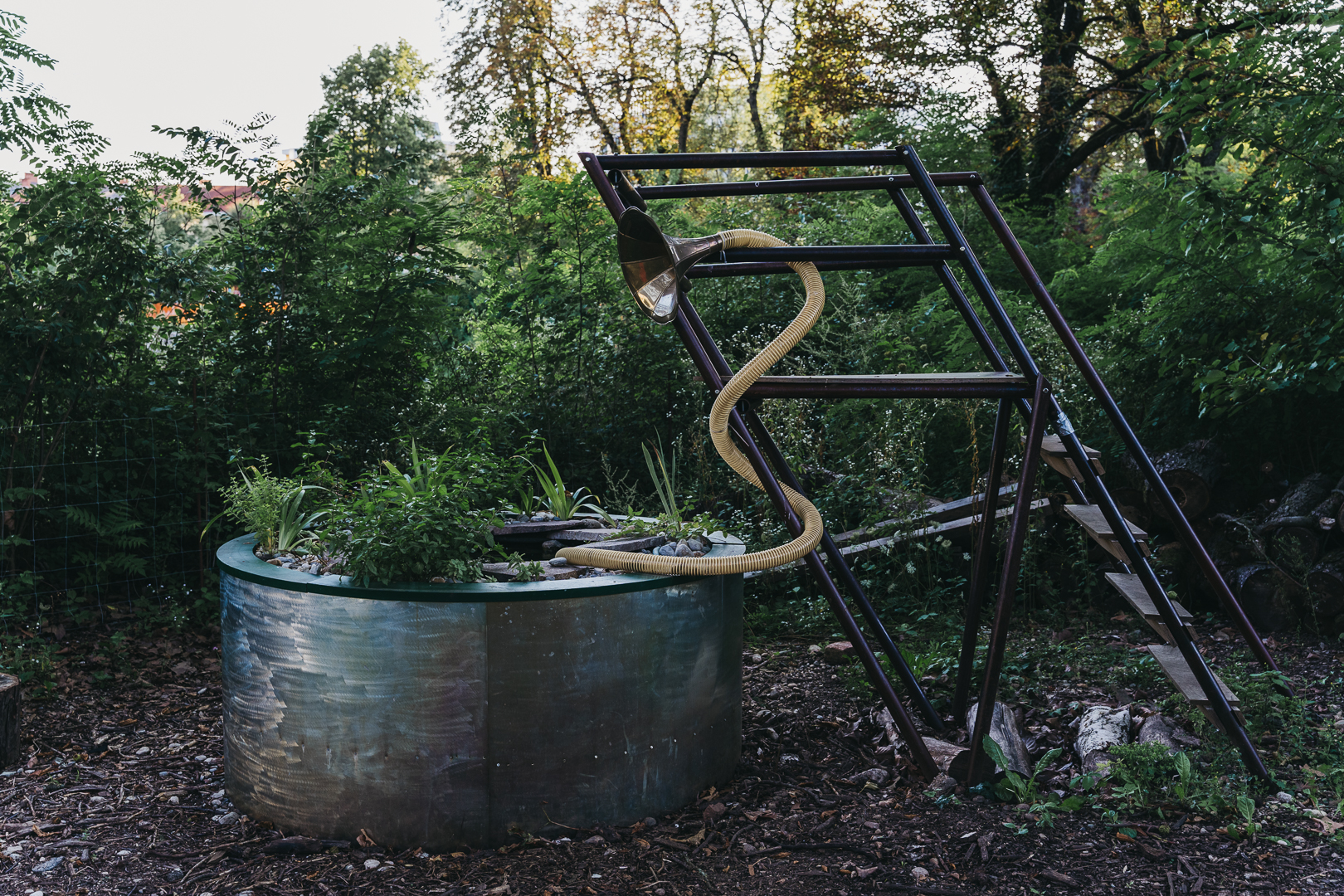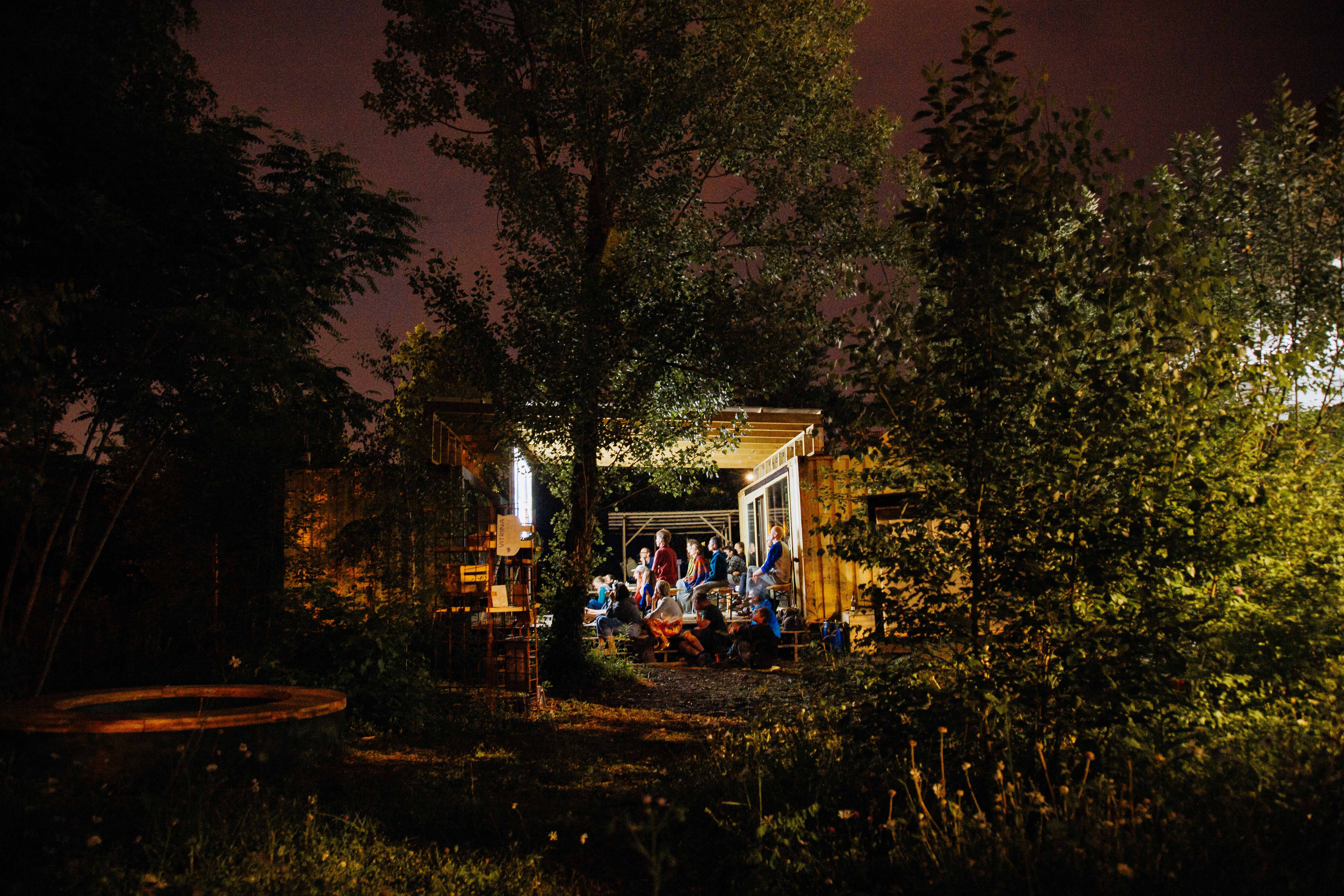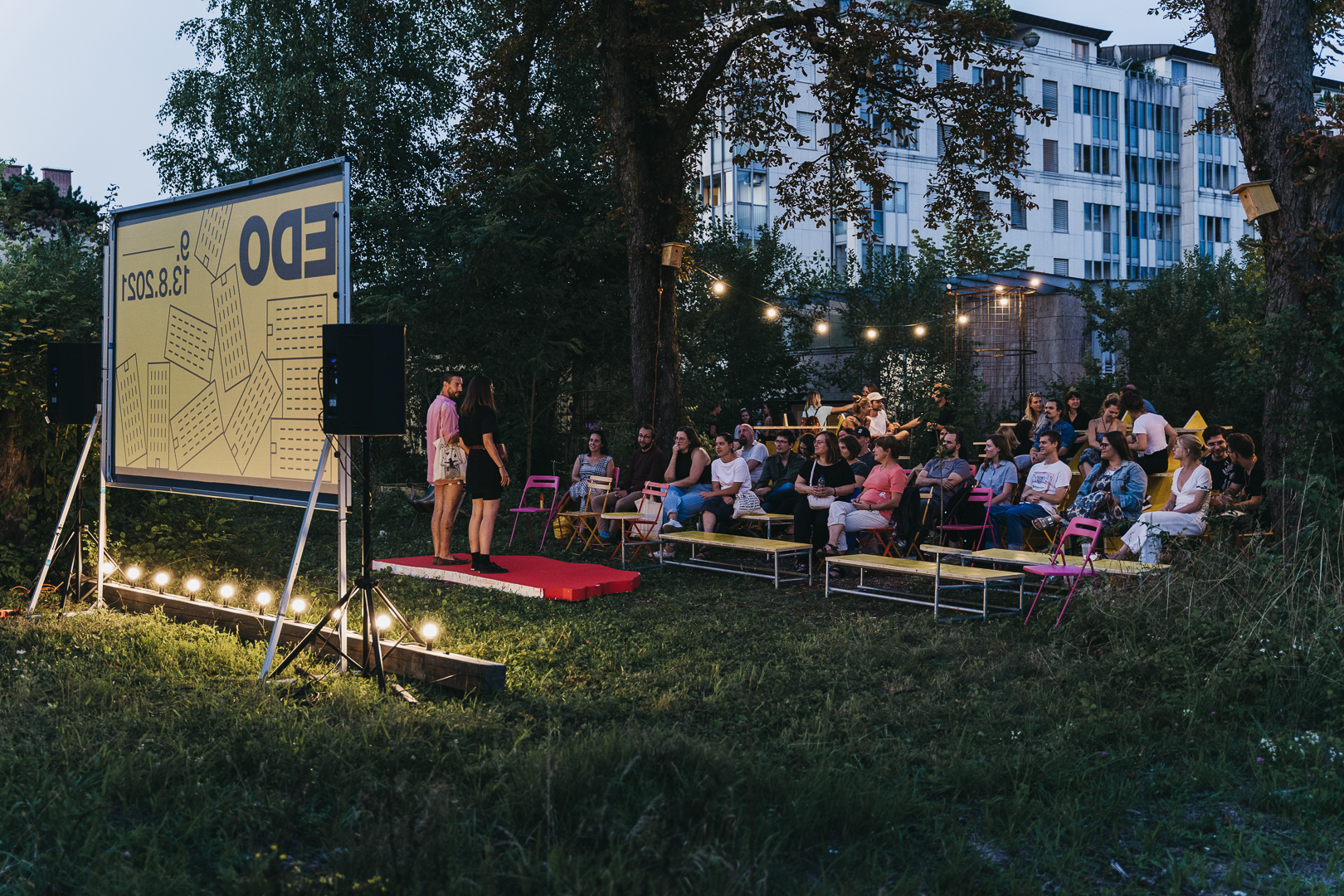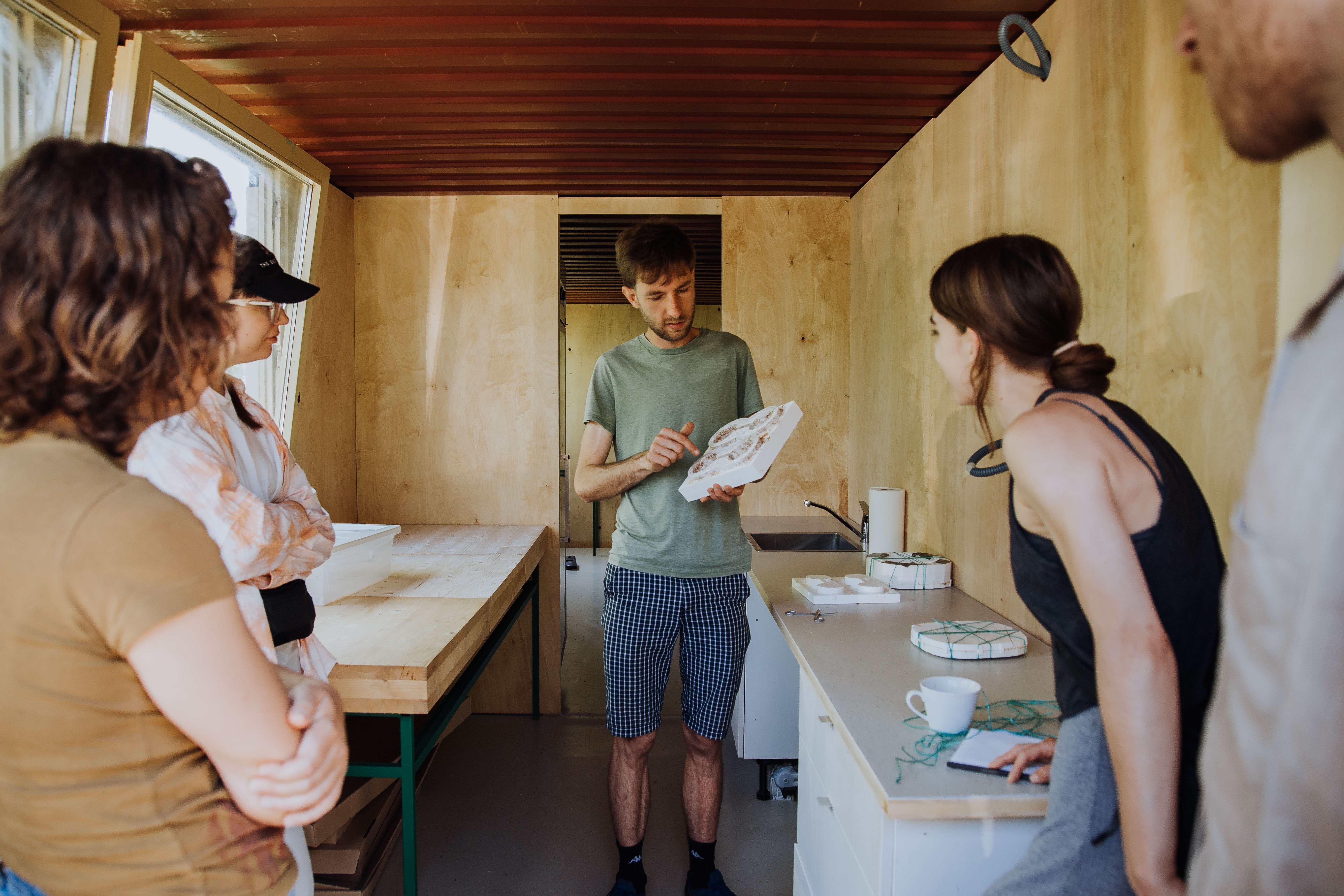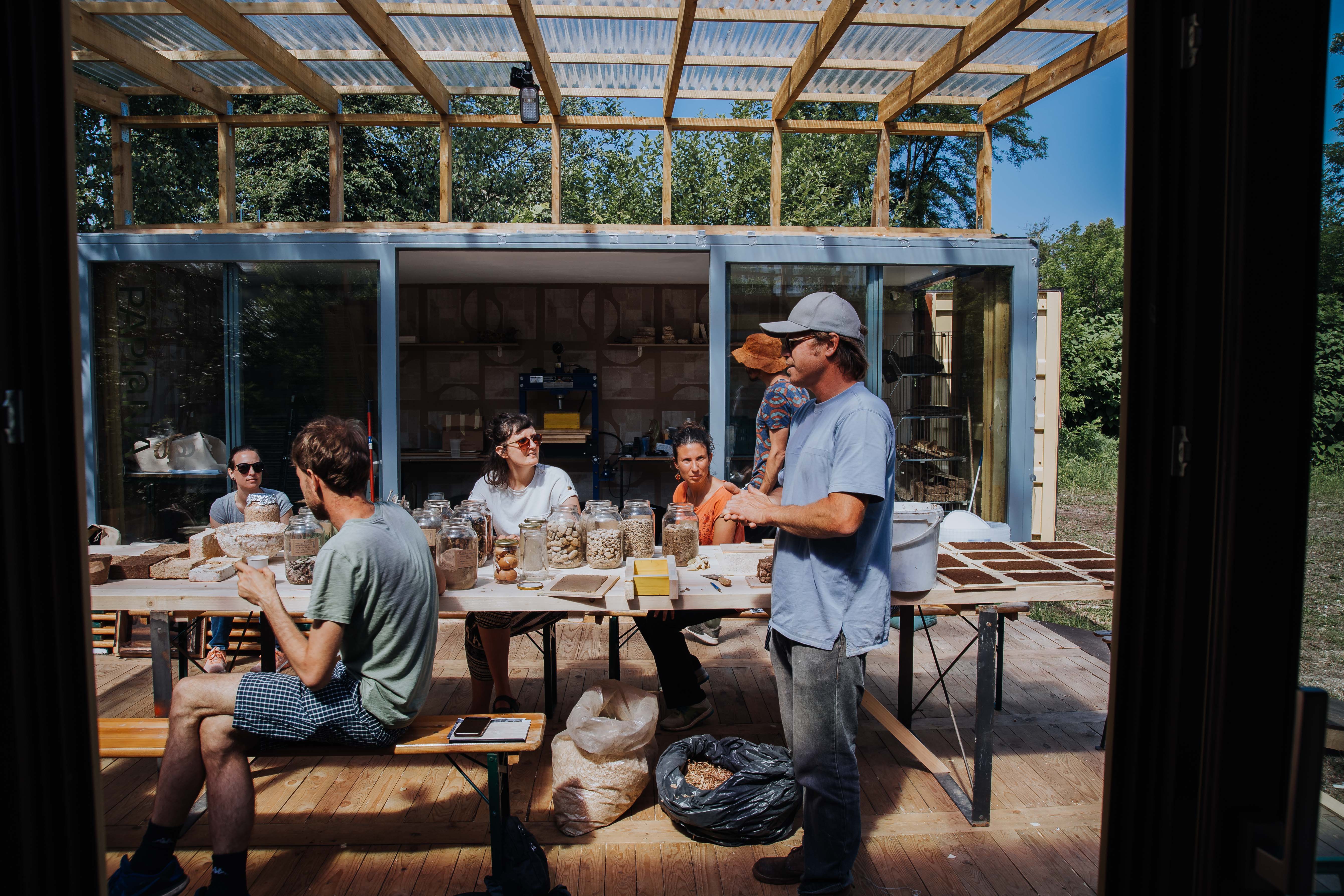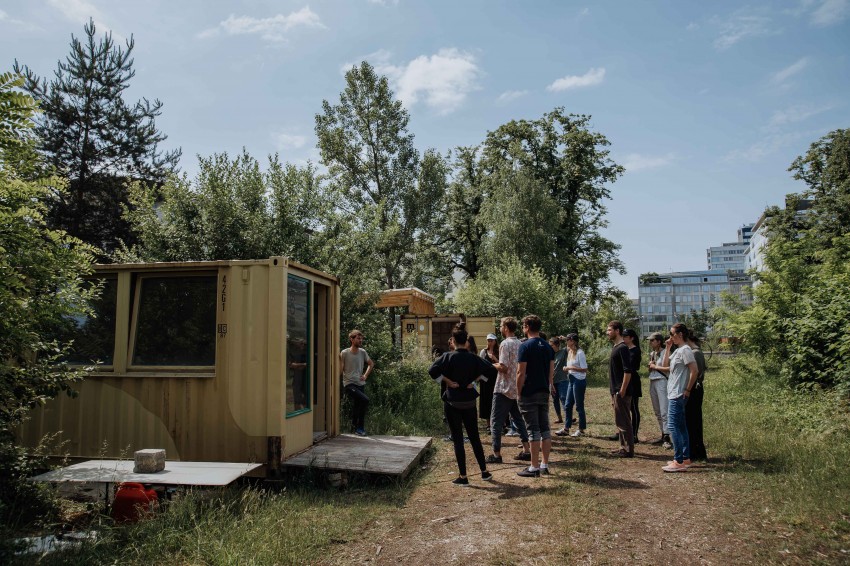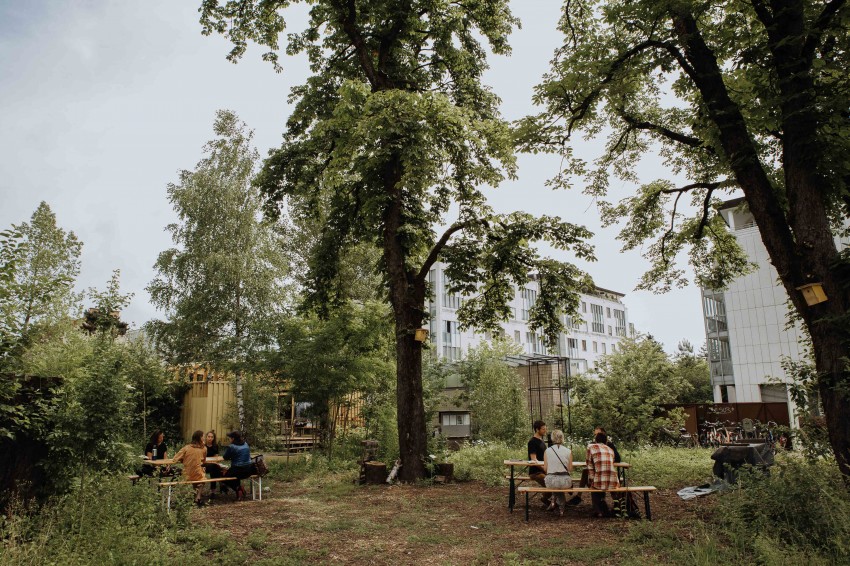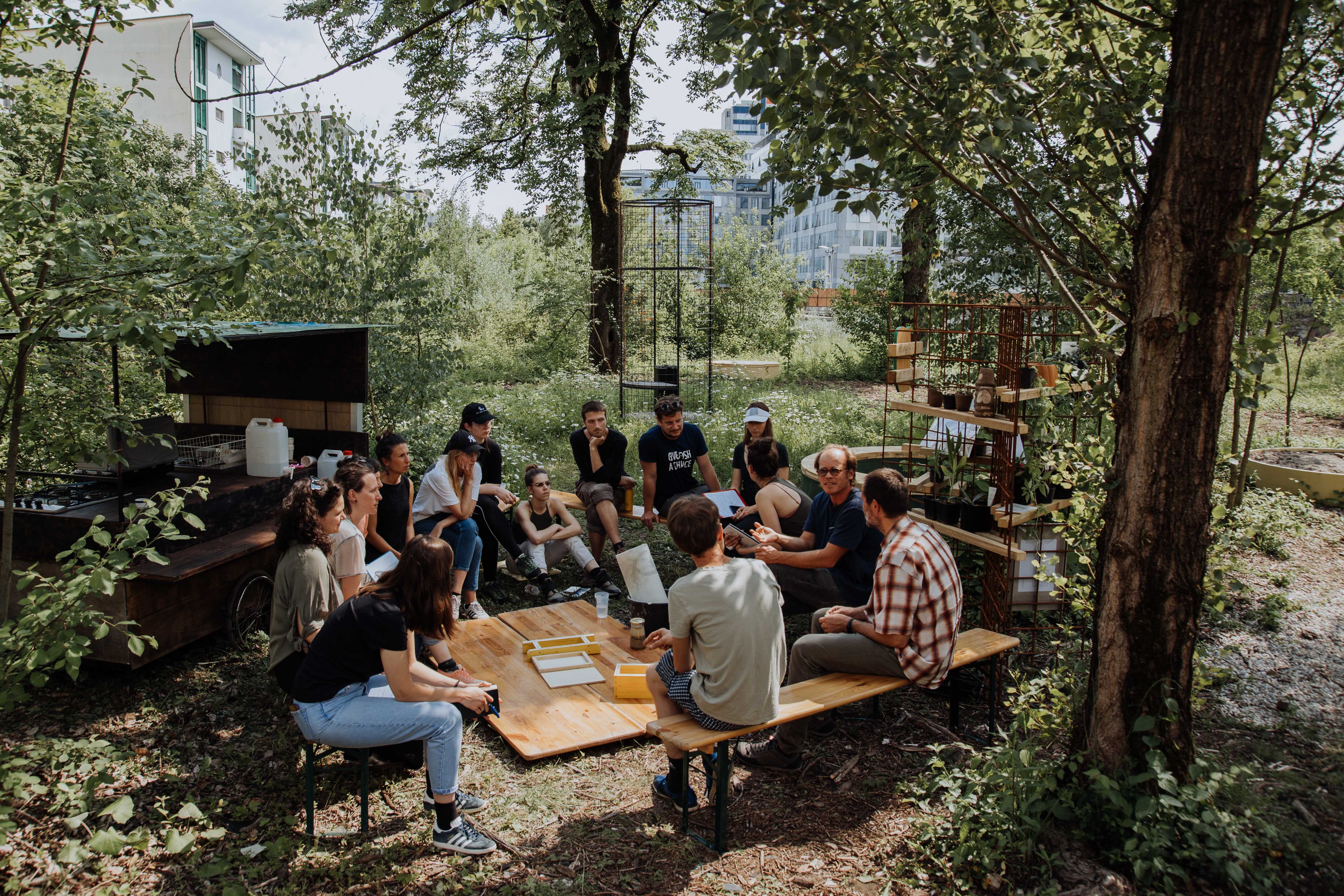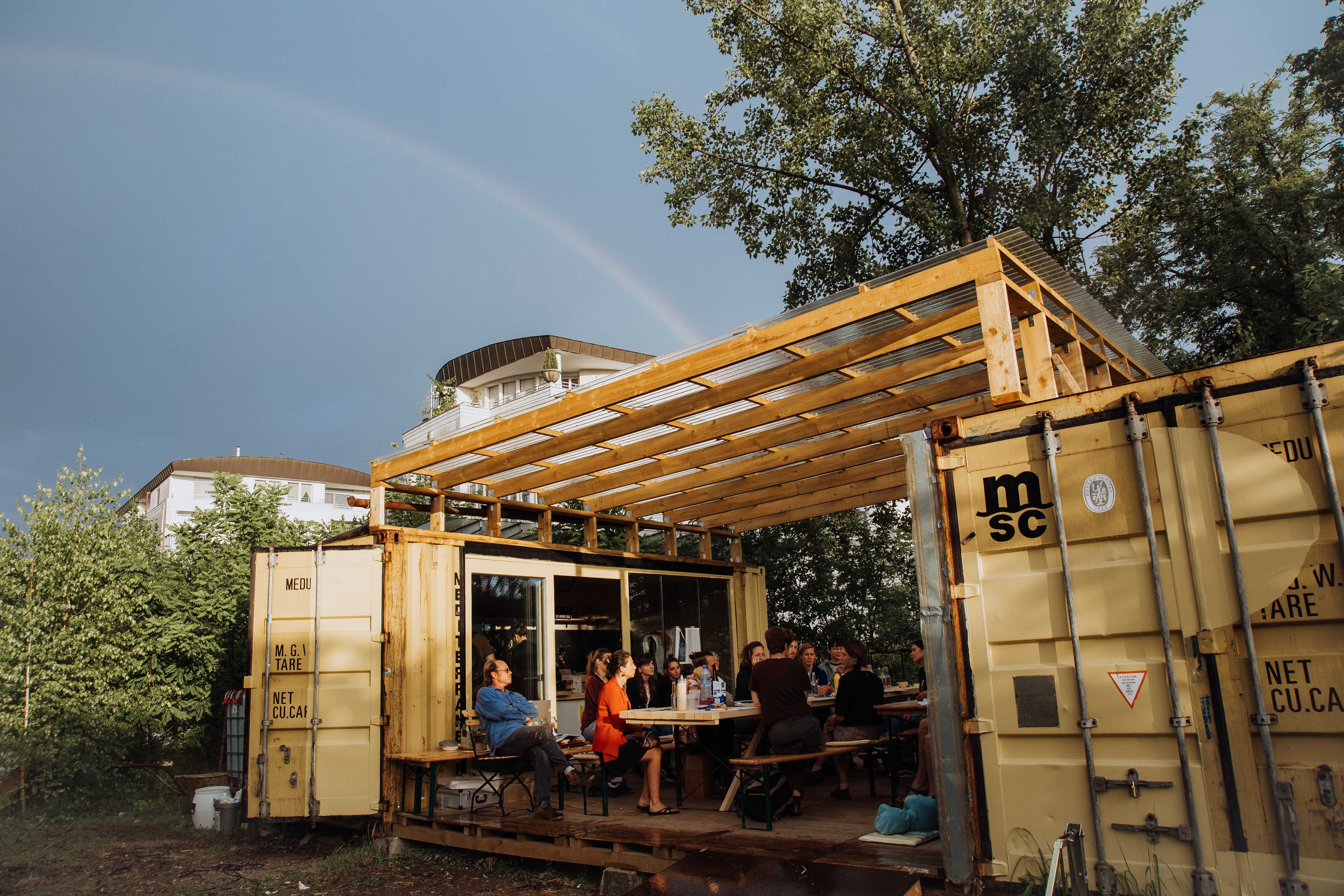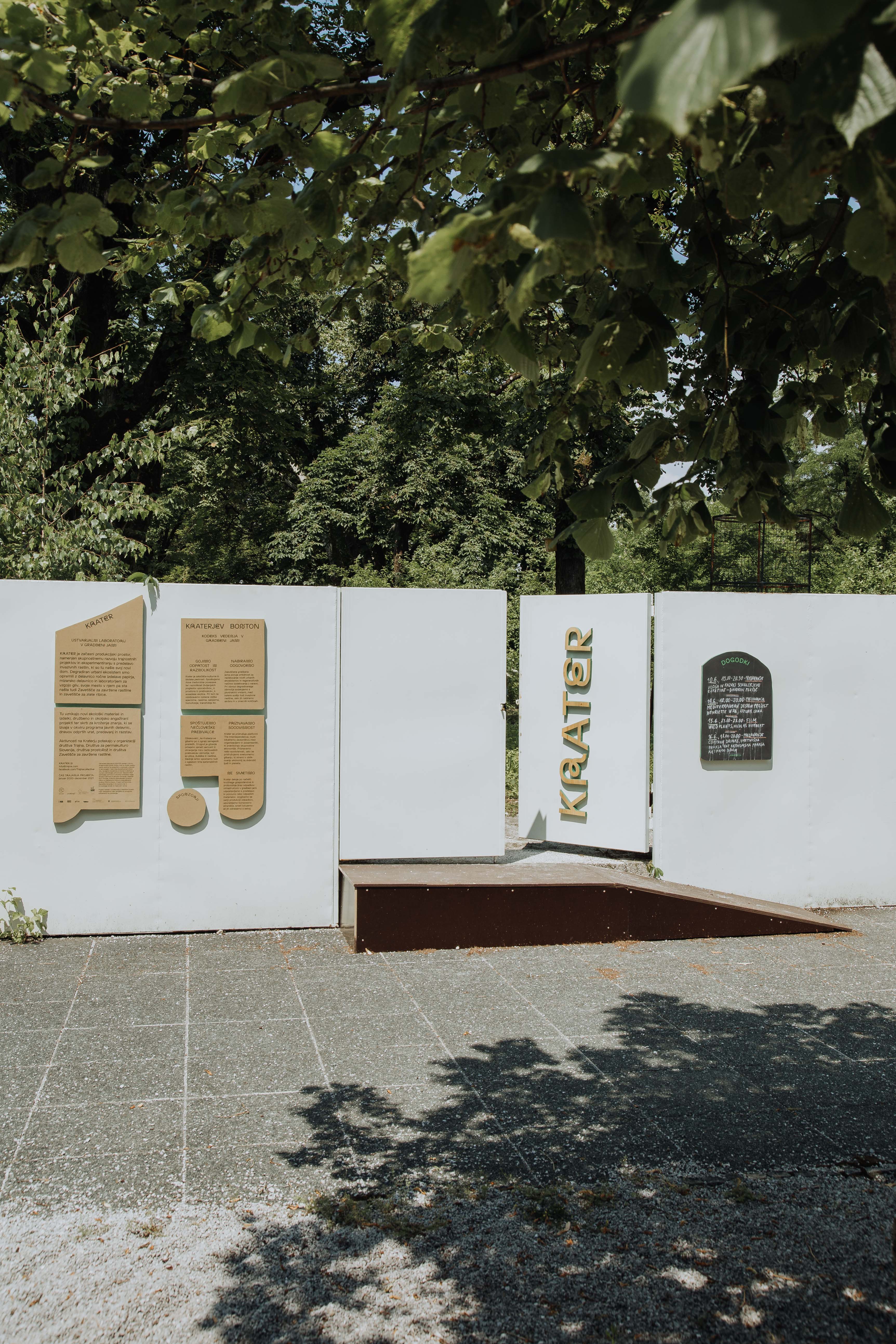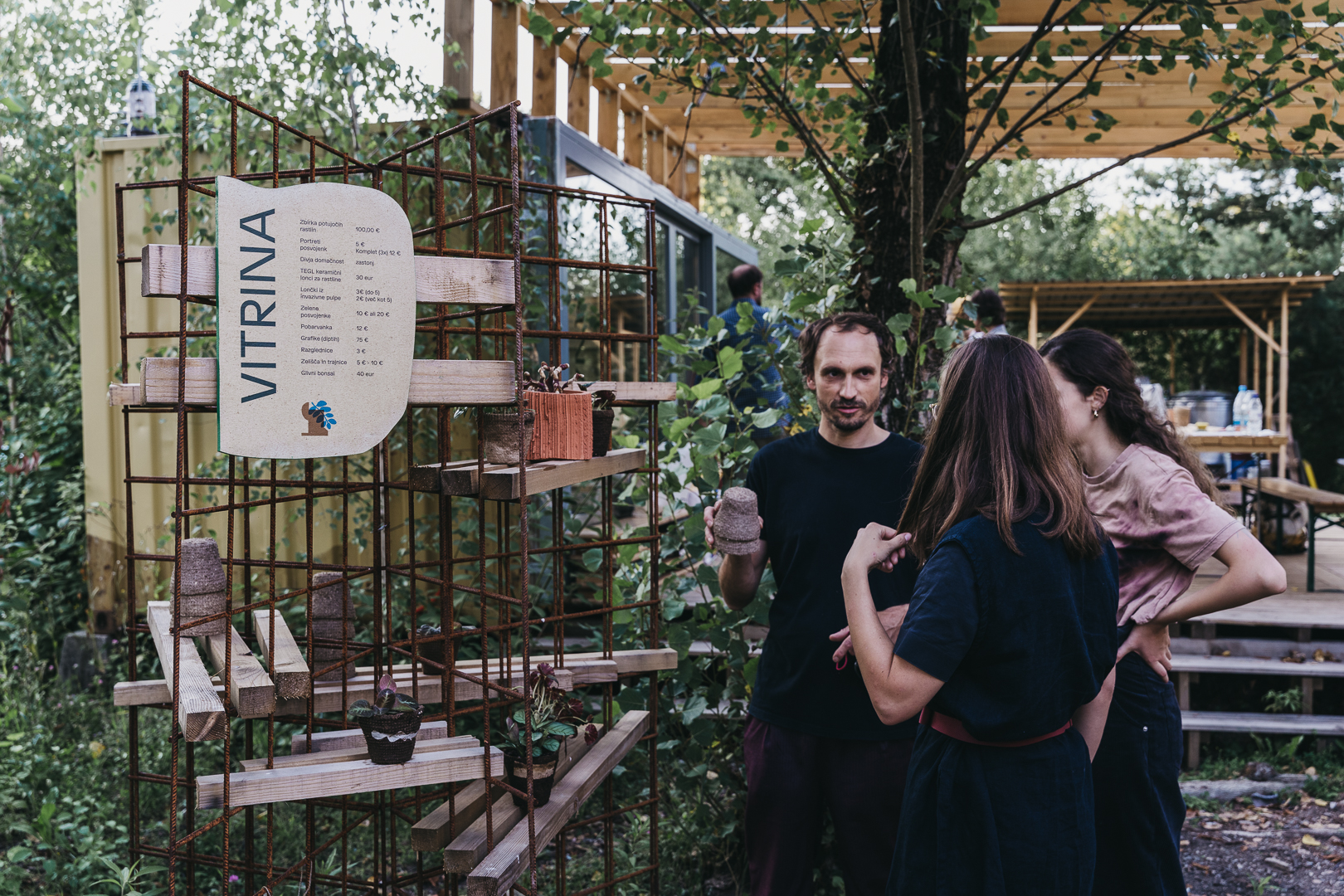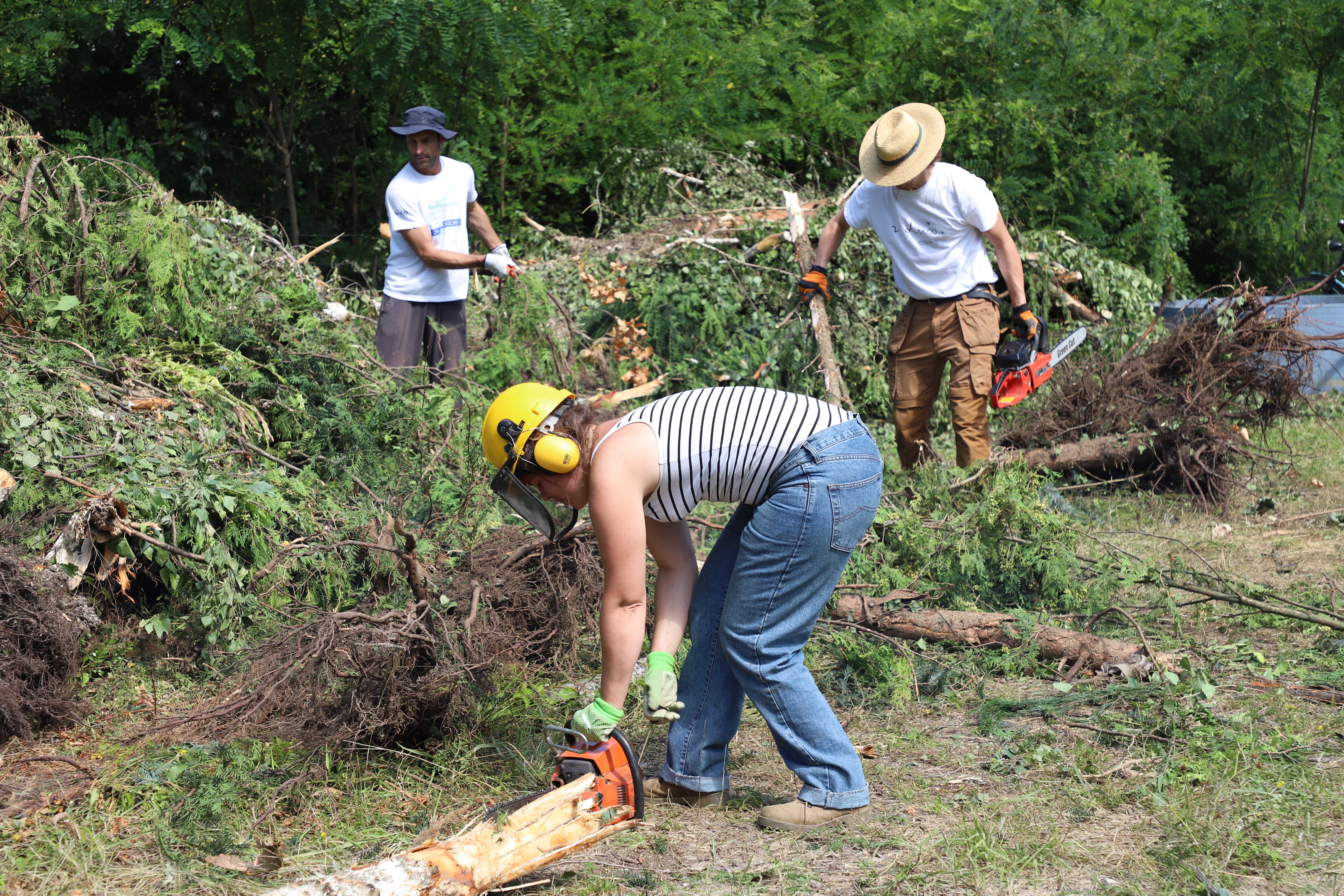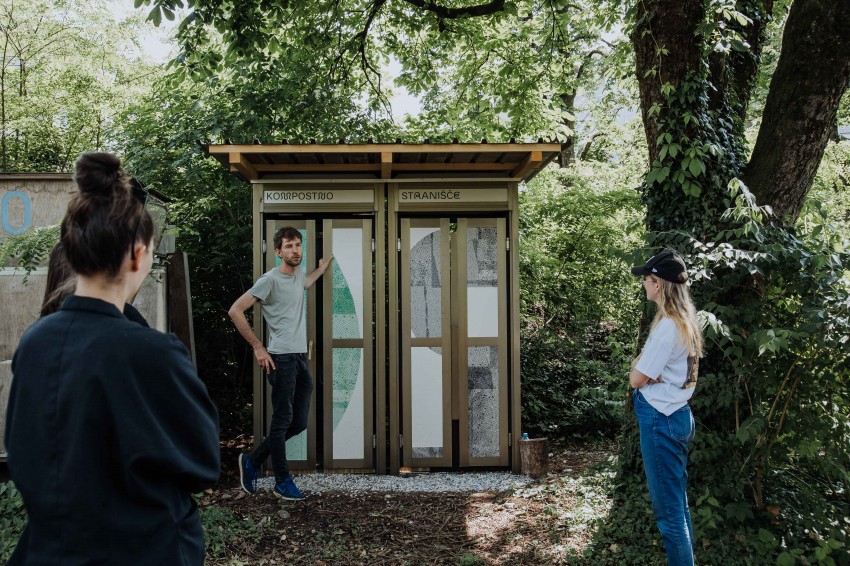Previous state
When the Bežigrajski dvor neighbourhood was constructed in Ljubljana, in 1994, some old barracks were demolished in order to build a residential and commercial area. The rest of the plot was designated for a building of the state administration, but it never actually obtained a building permit. As a result, before this project, the site was a run-down lot, much like a crater, close to Ljubljana’s city centre. Furthermore, the pit had been fenced off, so passers-by could barely see what was hidden within. The Ministry of Justice, owner of the site spanning 18,000 m2, had received complaints from local residents about its state of decay, and it had become a nest for rats and mosquitoes. The Ministry accepted a proposal whereby the site could be temporarily reused, and in 2020 they signed a contract to endorse the free management of 4,000 m2 of it, for two years.
So, for the first time in 26 years, this closed-off, hidden site was accessible to the public.
Aim of the intervention
The objective of Krater was to restore and temporarily repurpose this abandoned plot. The collective in charge was made up of professionals from a range of disciplines — designers, ecologists, permaculturists and architects — and together they formed the Krater community. They focused their efforts on reviving the plot, with a view to setting up a production space, run by ecosocial activists, for the local community. They manufactured eco-friendly materials, and they fostered practices that would invite urban communities to learn more about the environment and the work of the groups involved in the project.
Description
Preliminary landscaping restoration work was carried out, and three mobile production units were installed, i.e. two workshops (one for wood and one for plant fibres) and a MycoLab. These units would help broaden the imaginary of the city’s residents, in terms of what it means to live with nature. It was crucial that these production units were mobile, so they could be moved elsewhere once the building works eventually recommenced on the site. Also, importantly, they were built from recycled materials. The designs for the site took into account its microclimate conditions (sunshine, humidity), and they were adjusted to suit specific needs (for example, the Sanctuary for Abandoned Plants requires more humidity than other units). As well as the mobile production units, different infrastructures have also been designed to meet the needs of the community: there’s a common area with a covered patio, a kitchen, a clay storage area, an area for treating biomass, bathrooms, a goldfish pond, gardens, a beehive, an insect hotel and aviaries.
Assessment
Krater invites its visitors to learn skills of self-organisation and self-sufficiency, and to acquire knowledge about local ecology. This innovative ecosystem offers examples of how to design reserves that are resistant to the climate in urban contexts, and which can improve the lives of both humans and non-humans.
There is a perception that ecosystems like that of Krater are a kind of deteriorated nature, so their importance is often overlooked: they can in fact play a key role in terms of biodiversity, by mitigating the effects of urban overheating, noise and air pollution. This plot, which used to be seen as a source of trouble for the community, became the source of new possibilities for the local residents.
The workshops allow invasive plants, fungi, clay and organic waste to be treated, while also providing the space and tools to produce simple objects, with low greenhouse gas emissions.
[Last update: 15/11/2022]


